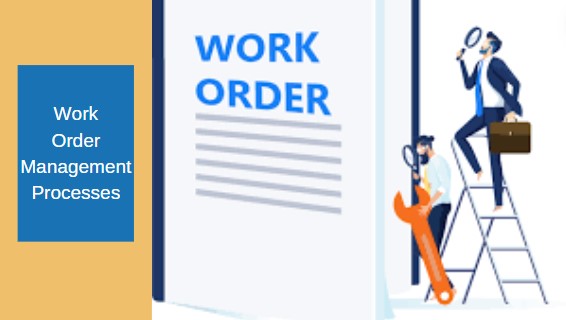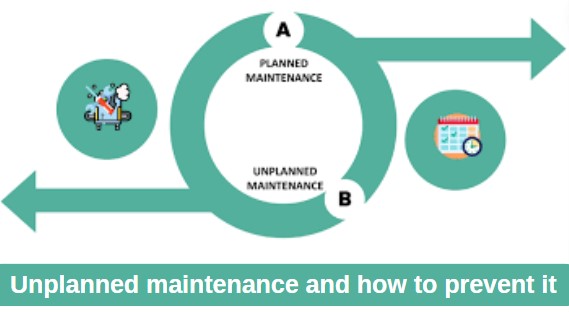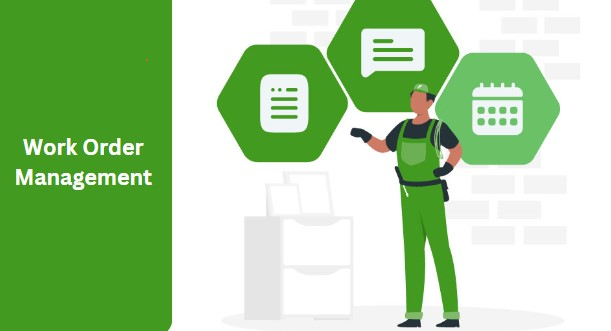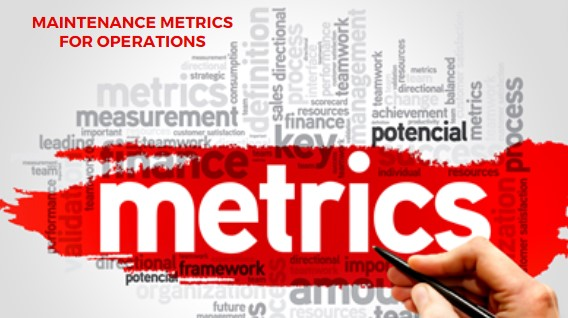
Work Order Management Process: Prioritizing Maintenance Activity
Viki Dongare |
18 Feb 2024 |
06:53 AM
- The Work Order Process
- Developing a Work Order Priority System
- Effects of Poor Maintenance Prioritization
- Simplifying Maintenance Prioritization with CMMS Software
- The Benefits of Having a Robust Work Order Management (WOM) System
- What Does a Typical Work Order Management Process Look Like?
- Work Order Management Best Practices
- Effects of Poor Maintenance Prioritization:
- Creating a Maintenance Priority System:
- Conclusion

What is Unplanned Maintenance and How to Prevent it
Viki Dongare 24 Jan 2024 | 11:32 AMExplore the keys to operational resilience with an insightful guide on unplanned maintenance, planned strategies, and CMMS integration. Elevate your maintenance approach and minimize downtime for sustained business success....
What is a Work Order?
A work order is a formal document or request that outlines specific tasks or activities to be completed by maintenance personnel within an organization. It serves as a directive for maintenance tasks, providing detailed instructions, timelines, and necessary resources for completion. Work orders are crucial for ensuring efficient maintenance operations and proper allocation of resources.
In essence, a work order management processes encapsulate the scope of work to be performed, including details such as the location of the task, equipment or assets involved, materials needed, and any safety precautions or protocols to be followed. It acts as a communication tool between requesters, maintenance teams, and management, facilitating clear and concise information exchange throughout the maintenance process.
Maintenance teams rely on work orders to prioritize and schedule tasks based on their urgency, importance, and available resources. By systematically organizing maintenance activities, work orders help streamline workflows, minimize downtime, and optimize operational efficiency.
Moreover, work orders play a significant role in tracking and documenting maintenance activities for future reference, compliance, and analysis. They provide a record of completed tasks, maintenance history, and performance metrics, aiding in evaluating the effectiveness of maintenance processes and identifying areas for improvement.
Overall, work orders serve as the backbone of maintenance management, guiding the execution of maintenance tasks, supporting preventive maintenance schedule, and ensuring the smooth operation of facilities and equipment.
The Work Order Process

Task Identification - In the work order process, task identification marks the initial step where maintenance needs are recognized and defined. It involves identifying maintenance tasks required to address equipment issues, repairs, inspections, or preventive maintenance schedules. This stage typically involves input from various sources, including maintenance technicians, facility managers, or automated monitoring systems. Clear and accurate task identification ensures that maintenance activities are aligned with organizational goals, priorities, and resource availability.
Requester Creates the Work Order - Once maintenance tasks are identified, the requester, often a facility manager or equipment operator, initiates the work order creation process. The requester submits a formal request detailing the nature of the maintenance required, including specific instructions, location, equipment involved, and any relevant documentation. This step serves as the official request for maintenance work to be performed and initiates the formal documentation process.
Maintenance Manager Approves the Work Order - After receiving the maintenance request, the maintenance manager or supervisor reviews and approves the work order. They assess the scope of work, resource availability, and priority level to determine the feasibility and urgency of the maintenance task. Approval from the maintenance manager validates the necessity of the maintenance work and authorizes the allocation of resources for its execution.
Maintenance is Assigned - Once the work order is approved, the maintenance manager assigns the task to the appropriate maintenance technicians or teams. Assignments are based on factors such as skillset, availability, workload, and geographical proximity to the maintenance site. Clear communication and coordination ensure that maintenance assignments are effectively delegated and understood by the responsible parties.
Perform Maintenance and Close Out the Work Order - With the maintenance task assigned, technicians proceed to perform the necessary work as outlined in the work order. They follow established procedures, safety protocols, and best practices to complete the maintenance activities efficiently and effectively. Upon completion of the work, technicians document their actions, any parts used, and any additional observations made during the process.
Finally, the work order is closed out, signifying the successful completion of the maintenance task and providing a record of the work performed for future reference.
Developing a Work Order Priority System
Steps for Developing Your Own Work Order Priority System:
Develop Risk Areas and Severity - Identify critical assets or areas within your facility that require maintenance attention. Assess the severity of potential failures or breakdowns in these areas to prioritize maintenance tasks effectively. Consider factors such as safety implications, operational impact, and financial consequences to determine the level of risk associated with each maintenance activity.
Create the Probability Table -Develop a probability table that quantifies the likelihood of equipment failures or maintenance issues occurring based on historical data, asset condition monitoring, or industry standards. Assign probabilities to different types of maintenance tasks or failure scenarios to prioritize them accordingly within your work order system.
Issue and Educate - Implement the work order priority system across your maintenance team and ensure that all stakeholders are adequately trained and informed about its usage. Clearly communicate the criteria for prioritizing maintenance tasks and provide training on how to input, track, and manage work orders within the system. Address any questions or concerns to ensure widespread understanding and compliance.
Periodically Audit the Use of the System - Regularly review and audit the effectiveness of your work order priority system to identify areas for improvement and ensure alignment with organizational goals. Analyze metrics such as response times, task completion rates, and key performance indicators to evaluate the system's performance and make adjustments as needed. Solicit feedback from operation team members and stakeholders to continuously refine and optimize the prioritization process.
Effects of Poor Maintenance Prioritization
Emotional Factors That Obstruct Maintenance Prioritization:
Narrow Operational Focus - When maintenance teams focus solely on immediate operational needs without considering long-term maintenance priorities, it can lead to poor decision-making and neglect of critical tasks. This narrow operational focus often results in reactive maintenance practices, increased downtime, and higher maintenance costs due to neglected preventive maintenance schedule.
Departmental Self-Importance - Internal competition or territorialism between departments within an organization can hinder effective maintenance prioritization. When departments prioritize their own interests over overall maintenance needs, it can lead to resource allocation conflicts, delays in addressing critical maintenance issues, and inefficiencies in maintenance workflows.
Personal Gains - Individual motives or personal agendas among maintenance personnel can also interfere with maintenance prioritization efforts. When individuals prioritize tasks based on personal gain, favoritism, or career advancement opportunities, it can result in skewed priorities, overlooked maintenance requests, and compromised operational integrity.

Personality Differences - Differences in personalities and communication styles among maintenance team members can create friction and hinder collaborative prioritization efforts. Misunderstandings, conflicts, and resistance to change may arise, impacting the ability to effectively prioritize maintenance tasks and coordinate workflow processes. Building strong team dynamics and fostering open communication channels are essential for overcoming these challenges and promoting effective maintenance prioritization.
Simplifying Maintenance Prioritization with CMMS Software
What is Work Order Management?
Work Order Management (WOM) is the systematic process of creating, prioritizing, assigning, tracking, and completing maintenance tasks within an organization. It involves the coordination of maintenance requests, scheduling of preventive and reactive maintenance work, and management of resources to ensure efficient and effective maintenance operations. Work order management processes streamline the maintenance workflow, providing visibility into pending tasks, facilitating communication among team members, and optimizing resource utilization.
The Benefits of Having a Robust Work Order Management (WOM) System

Implementing a robust Work Order Management (WOM) system offers numerous benefits to organizations:
-
Improved Efficiency: Streamlined processes and automated workflows enable faster task assignment, execution, and completion, reducing downtime and increasing productivity.
-
Enhanced Communication: Centralized platforms facilitate clear communication among maintenance team members, requesters, and managers, ensuring everyone is aligned on priorities and updates.
-
Better Resource Utilization: Effective allocation of maintenance resources based on priority levels and availability ensures optimal utilization and cost-effectiveness.
-
Accurate Tracking and Reporting: Detailed records of maintenance activities, including work requests, task status, and completion timelines, enable comprehensive tracking and reporting for performance evaluation and compliance purposes.
-
Proactive Maintenance: By scheduling preventive maintenance tasks and tracking equipment health indicators, WOM systems support proactive maintenance practices, reducing the likelihood of unexpected breakdowns and costly repairs.
-
Data-Driven Decision Making: Key performance indicators and maintenance metrics captured within WOM systems provide valuable insights for informed decision-making, continuous improvement, and strategic planning.
What Does a Typical Work Order Management Process Look Like?
Work Request - The process begins when maintenance requests are submitted, either manually or through a digital platform, detailing the nature of the maintenance work needed. These requests may originate from various sources such as facility managers, equipment operators, or automated monitoring systems.
Work Requests Become Work Orders - Once maintenance requests are received, they are reviewed and assessed by maintenance managers. Approved requests are then converted into formal work orders, specifying the tasks to be performed, priority levels, required resources, and deadlines. Work orders are assigned unique identifiers for tracking purposes.
Technicians Receive the Work Order and Get to Work - Assigned technicians receive the work orders along with detailed instructions and relevant information. They prioritize tasks based on urgency, availability of resources, and established maintenance schedule. Technicians execute the assigned tasks, record progress, and communicate any issues or deviations from the plan.
Work Order is Completed and Closed - Upon completion of the maintenance tasks, technicians update the status of the work orders, documenting any observations, repairs made, and parts used. Maintenance managers review the completed work orders for accuracy and compliance before officially closing them out. Closed work orders provide valuable data for performance analysis, resource allocation, and future planning.
Work Order Management Best Practices

Build SOP's and Checklists
Standard Operating Procedures (SOPs) and checklists are essential tools for streamlining maintenance operations and ensuring consistency in work execution. SOPs outline step-by-step instructions for carrying out specific maintenance tasks, including safety protocols, equipment setup, and troubleshooting procedures. Checklists serve as quick-reference guides to ensure that no steps are missed during maintenance tasks. By implementing SOPs and checklists, maintenance departments can improve efficiency, reduce errors, and enhance safety compliance.
Develop Methods for Prioritizing Maintenance Workflows
Effective prioritization of maintenance workflows is crucial for optimizing resource allocation and minimizing downtime. Implementing a prioritization system based on factors such as asset criticality, safety concerns, and operational impact helps maintenance departments focus their efforts on tasks with the highest urgency and importance. Utilizing maintenance management software enables automated tracking of maintenance schedule, equipment status, and inventory levels, facilitating proactive maintenance planning and decision-making. This systematic approach enhances overall operational efficiency, reduces equipment failure rates, and ensures that activities align with organizational goals.
Effects of Poor Maintenance Prioritization:
-
Emotional Factors That Obstruct Maintenance Prioritization:
Personality differences can lead to conflicting priorities and hinder effective decision-making within the maintenance department.
Personal gains may influence individuals to prioritize tasks that benefit them personally rather than the overall goals of the organization.
Departmental self-importance can result in siloed thinking and reluctance to collaborate, leading to inefficient allocation of resources.
Narrow operational focus may cause maintenance teams to prioritize tasks based solely on immediate concerns rather than long-term strategic objectives.
Creating a Maintenance Priority System:
Creating a Maintenance Priority System is essential for efficient operations. Starting with safety ensures critical tasks are addressed first. Establishing a matrix helps categorize tasks by urgency and impact. Educating the team fosters understanding, while accountability ensures tasks are completed promptly, enhancing overall operational efficiency.
Start with Safety

Start with safety by prioritizing tasks that pose the highest risk to personnel or equipment.
Make a Matrix
Make a matrix to categorize maintenance tasks based on factors like criticality, urgency, and impact on operations.
Teach Team Members
Teach team members about the priority system, ensuring everyone understands their roles and responsibilities.
Assure Accountability
Assure accountability by establishing clear guidelines for task prioritization and holding individuals accountable for their actions.
Conclusion
Effective work order management system and maintenance prioritization are vital components of any successful maintenance strategy. By implementing robust systems and processes, organizations can streamline maintenance workflows, reduce downtime, and optimize resource allocation. Prioritizing tasks based on factors such as safety, criticality, and impact allows maintenance teams to focus on the most important activities, enhancing overall operational efficiency and equipment reliability.
Furthermore, utilizing modern technologies such as work order management software and predictive maintenance tools can further improve maintenance outcomes. These solutions enable better tracking of operational activities, proactive identification of equipment issues, and predictive scheduling of maintenance tasks, ultimately leading to cost savings and increased asset uptime.
Additionally, fostering a culture of accountability and continuous improvement within the maintenance department is crucial. By empowering team members to take ownership of their tasks and encouraging collaboration, organizations can drive efficiency and productivity. Regular training and communication ensure that everyone understands their roles and responsibilities, contributing to a cohesive and effective maintenance team.

Moreover, considering the impact of emotional factors on maintenance prioritization, such as personality differences and departmental self-importance, organizations must strive to address these challenges proactively. By promoting open communication, fostering mutual respect, and emphasizing the shared goal of operational excellence, organizations can mitigate the negative effects of these factors and promote a positive work environment.
In essence, prioritizing maintenance activities is not only about addressing immediate needs but also about optimizing long-term asset performance and reliability. By adopting a systematic approach, leveraging technology, and nurturing a culture of collaboration and accountability, organizations can enhance their maintenance operations, reduce costs, and ensure the smooth functioning of their facilities.